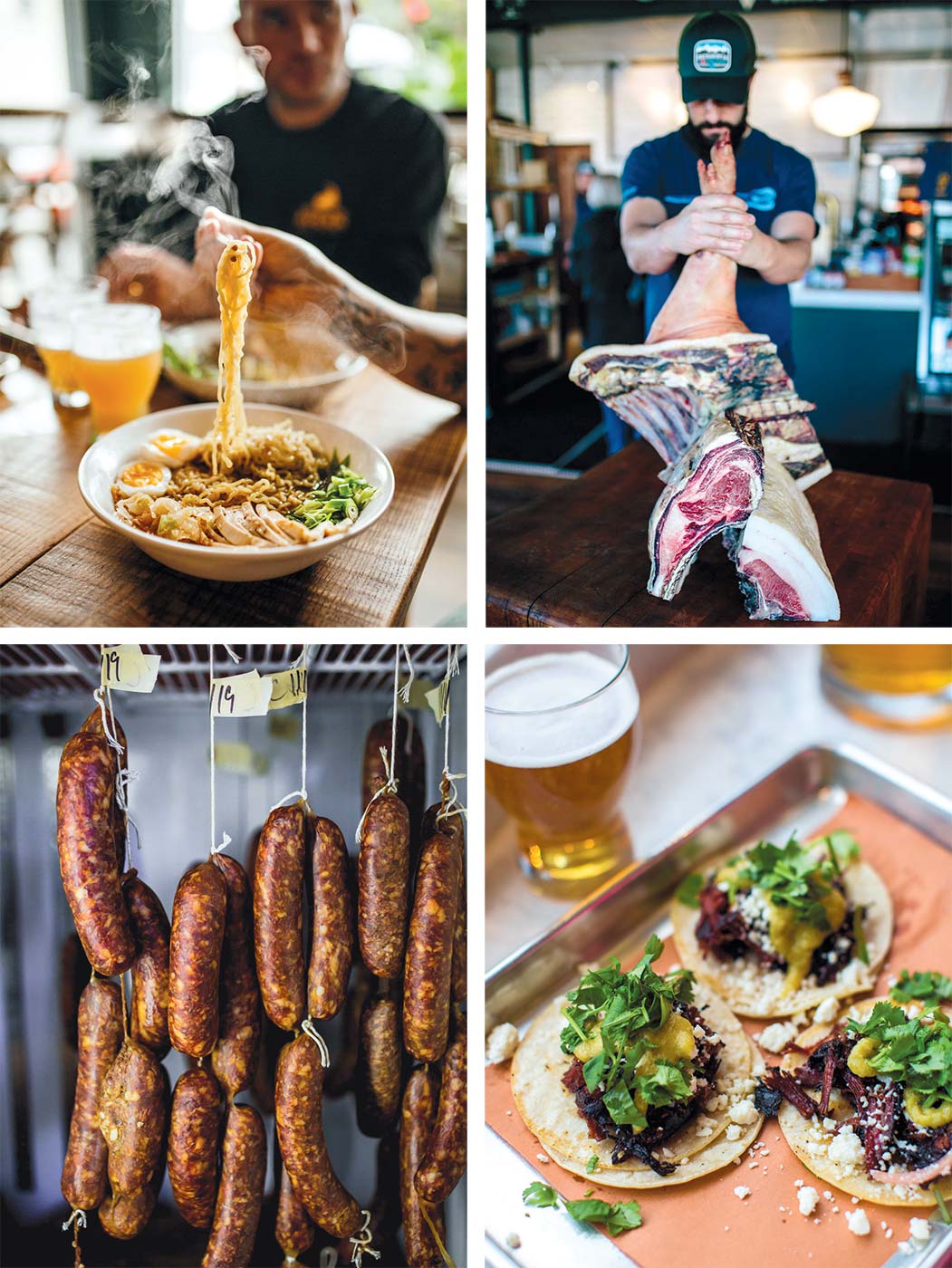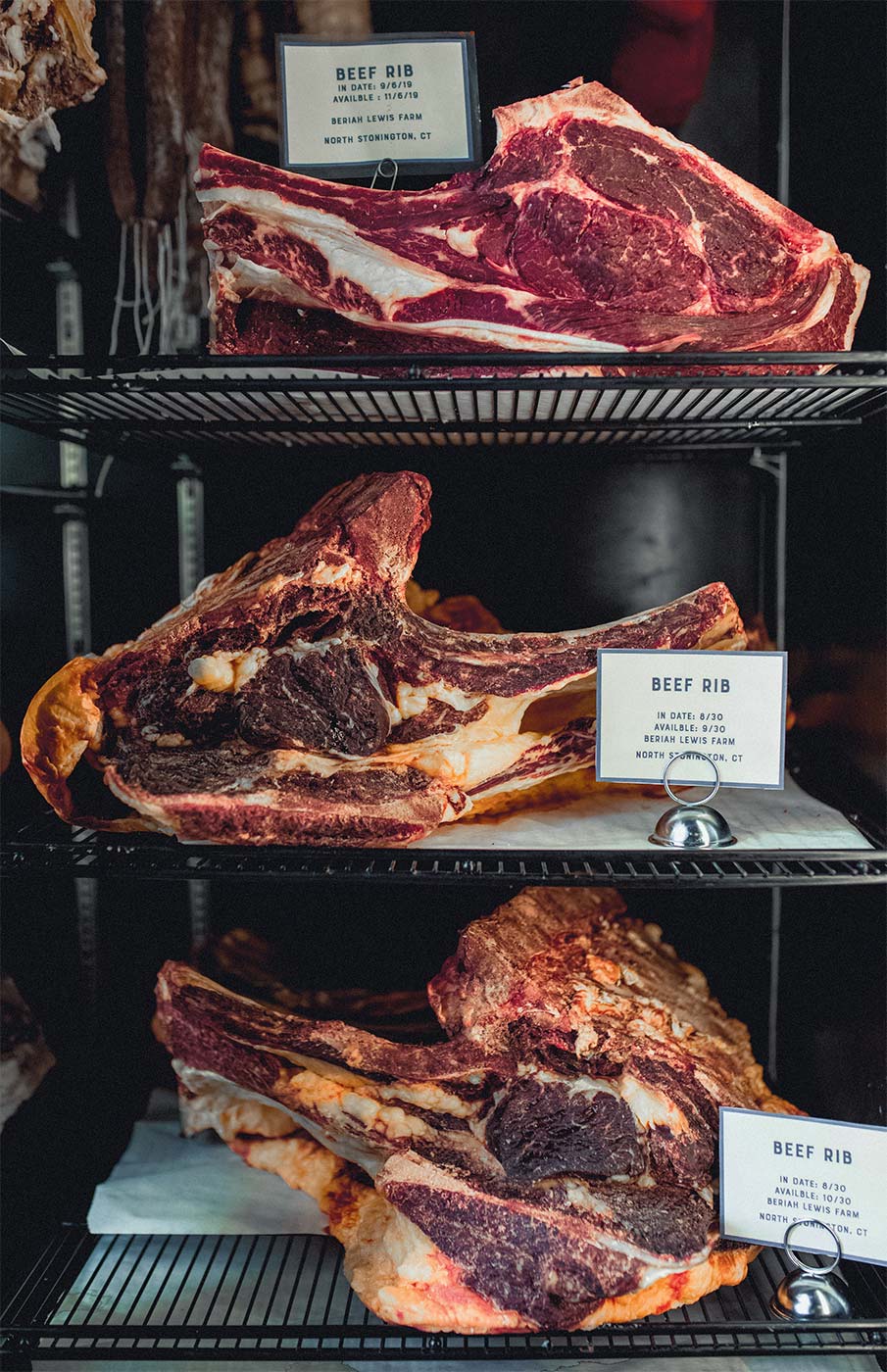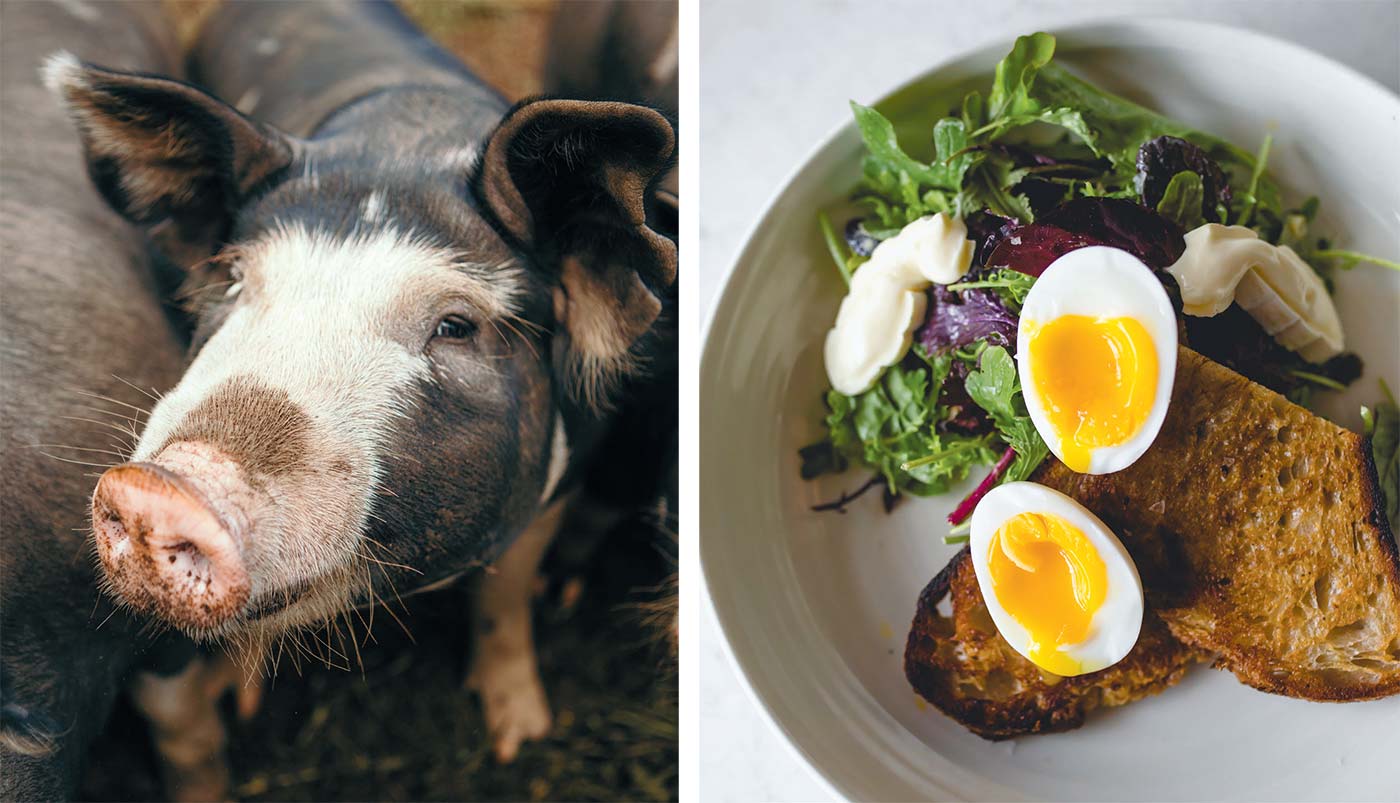A Butcher Shop with Something for Everyone (Even Non-Meat Eaters)

From delicious noodle dishes to house made charcuterie, Grass & Bone truly has something for everyone!
Soba dipping noodles with kelp, roasted oyster mushrooms, and summer vegetables is a pleasantly unexpected dish to find at a butcher shop and restaurant.
“We always have non-meat options. Sometimes they are our best sellers. We normally have a veggie sandwich, some salads, now we have a noodle dish. It’s part of the ongoing conversation we have about eating meat,” says restaurateur James Wayman.
In the two short years since Wayman and Dan Meiser opened Grass & Bone, it’s not only become a staple of the area but an example for other meat-focused businesses, earning a nod in Bloomberg’s 2018 list of best butcher shops in America. Yes, right here in Mystic. Attracting both locals and visitors, whether they eat meat regularly, infrequently, or not at all; want to settle in for a meal, pick up take-out, or order cuts of sirloin, hamburger, pork, and more to cook at home, Grass & Bone’s versatility was born out of efficiency and necessity. When Wayman and Meiser opened Oyster Club almost 9 years ago, the team did all of their own butchering, grinding, aging, and more.
“It’s important for our cooks to know butchering, it’s about respect for the animal,” Wayman says, adding they continue to do whole animal butchering at Oyster Club. It’s a philosophy they also brought to the Engine Room.
“We started hearing from guests, " at was the best steak I’ve had, where can I buy that?’ and our answer was ‘Well, you can’t,’ because there was no access to local meat. We had a need to build a team dedicated to the butchery craft and we saw an opportunity to create an outlet for the public and have a great little restaurant,” Meiser says. “It made our business more efficient, more consistent, and opened up an opportunity for new business.”
The restaurant within the butcher shop is an unusual set-up for the industry but one that allows them to source animals from small family farms and forces them to use every part of the animals that come into the shop.
“It’s a unique way to make whole animal butchery doable,” Meiser says.
The cost of raising animals at a small farm is higher than at an industrial farm so from the start Meiser and Wayman knew doing whole animal butchery sourcing from small farms meant paying more. The harvested animals are delivered to Grass & Bone as whole as possible. Cows are delivered in quarters and pigs in half as they’d simply be too big to move left whole but all the animals come intact meaning with all the bone, head, liver and organ meat. From that point the butcher team works their magic starting to break the animals down.
Not surprisingly, they don’t have any trouble selling cuts such as strips, rib-eyes, and filets but what do you do with rumps, and tongues, fat, and organs? In addition to not wanting to be wasteful, when you think about it they’re paying the same price for the head as for the strip steak.

“It’s important for our cooks to know butchering, it’s about respect for the animal.”

Grass & Bone is taking dry aging to new levels of flavor. Happy pigs from Wild Harmony make the difference while farm fresh eggs show beautiful color.
“From a moral and ethical standpoint, we're not going to be wasteful, it’s not in our DNA, but we also cannot afford to be wasteful” Meiser says. “We have a team of skilled chefs and we’ll take any cut of meat, prepare it as a dish, showcase, and sell it. We’re also educating people. ‘Hey here’s a beef shank you might never have cooked before but we can show you the end product and how delicious it is.’” Even the animal fat is used to make candles and decadent chocolate chip cookies as well as to cook with instead of canola or butter.
Walk up to the counter and the team of butchers and cooks will help you decide what to order from the restaurant such as a burger, various sandwiches, even beef tongue tacos have popped up on the menu, or what cuts to bring home, giving suggestions on how to cook them.
It was the rotisserie chicken that first brought me to Grass & Bone shortly after they opened. The beauty of a rotisserie chicken lies in its simplicity. It’s grab-and-go convenience for busy families and individuals on hectic weeknights, ideal on hot summer days when the thought of turning on your oven is terrifying. And it’s full of possibilities from eating the chicken straight up, to adding it to pasta or tacos the next day and finally making soup. The rotisserie chicken at Grass & Bone has become one of their best sellers—so juicy and flavorful it never fails to delight!
Talking to people around Mystic, Grass & Bone is beloved but comments of how good it is are often followed up by a mention of expense. And Wayman and Meiser are sensitive to the fact that the meat at Grass & Bone costs more than if you were to buy meat from an industrial farm.
“You have to feed yourself and it’s hard not to come across as elitist or non-inclusive but part of the conversation we want to have is what does your industrial food cost your health, what does it cost the planet?” Wayman says.
At a time many, including the United Nations, are calling for people to eat less meat Wayman and Meiser say you can do just that with Grass & Bone’s meats as it tends to be richer and the way in which it is raised is also better for the environment.
All of the animals that arrive at the butchery come from small, local farms. Much of it is organic, some of it is grass fed, but all of it, such as the pork from Exeter Rhode Island’s Wild Harmony Farm, comes from people that they know.
“They have to be good people that I trust,” Wayman says. “Organic is nice, but it’s more important that the people are caring for their land and for their animals. We want our animals to be pastured and eating grass, shrubs and insects and all the things that animals should eat.”
The pigs at Wild Harmony graze on forest land at the farm and in Grass & Bone the farmers found not only marketplace partners but an entire team helping to share the story of their farm.
“We sell four times the number of whole pigs as we did before working with them,” says Wild Harmony farmer Ben Coerper. “We’ve gotten customers that show up at our farm store because they’ve had our pork at Grass & Bone and want to try our other products or want to try something Grass & Bone is out of.”
As Wayman and Meiser reach the second anniversary of Grass & Bone, the two restaurateurs and their team are focused on continuing to enrich the community through conversations about what we’re eating and involving more farmers in that discussion. And that bodes well for all of us.



